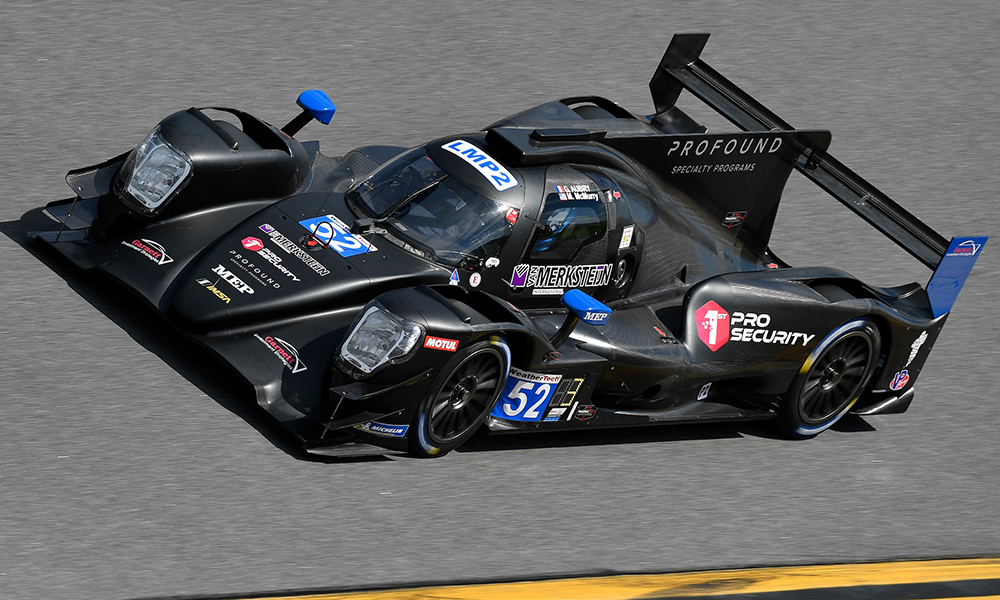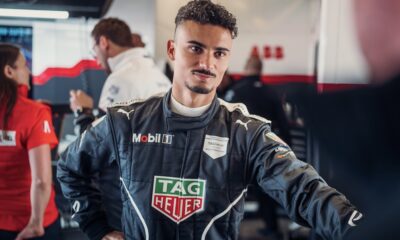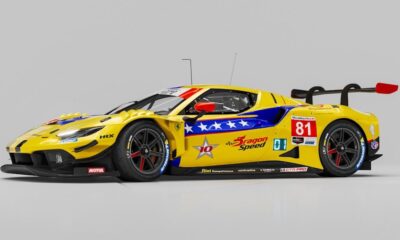
Photo: Rick Dole/IMSA
The IMSA WeatherTech SportsCar Championship’s only full season LMP2 entrants admit the class faces an uncertain future if it fails to attract more than their two cars beyond the Michelin Endurance Cup rounds this year, but acknowledged IMSA’s continued efforts in trying to boost the category.
Just a pair of Oreca 07 Gibsons, one each from Performance Tech Motorsports and PR1/Mathiasen Motorsports, are expected for the bulk of the eight-round season after JDC-Miller Motorsports and CORE autosport elected to take their programs to DPi for 2019.
IMSA has responded by removing the street races at Long Beach and Detroit from the LMP2 calendar, thereby eliminating costs and a pair of events that historically have proven unpopular for the amateur drivers that are the backbone of the pro-am class.
PR1/Mathiaen team principal Bobby Oergel says that decision alone has made a major impact to his team’s bottom line, and indicated that he remained optimistic about LMP2 and IMSA’s commitment to the pro-am prototype platform.
“I think the biggest assurance is [IMSA’s] stated need and want for a place for kids coming out of P3 to be able to go to, an affordable place for a pro-am prototype scenario,” Oergel told Sportscar365.
“I think it’s a great step to have not only for the gentleman drivers but also the aspiring younger drivers. Obviously everybody’s goal is to be in the top-tier [DPi] category, but that comes at a cubic-dollar situation.
“It takes $4.5-million to be [in DPi], but when you can say under 2 million for P2, it’s eight races and that’s the whole budget, that’s a big difference.”
Performance Tech team owner Brent O’Neill admitted he’s concerned on the long-term sustainability of the class if only two cars are on the grid for the full season, prompting him begin investigating options in the European Le Mans Series.
“IMSA has said all along that they’re committed to the P2 program, but I’m worried,” he told Sportscar365. “How is IMSA going to sustain a championship if there’s two cars?
“I’ve got a $600,000 investment that we all bought into last year, came here to the 24, and it was a huge event. 365 days later, it’s turned into a mess.
“If it wasn’t for my P3 guys I wouldn’t have any drivers. You can’t sell the program, and I’ve talked to three or four teams over in Europe because my guys have asked me to explore ELMS.
“I’m really concerned of the state of P2 here. I hate to say that and I hate to see it because it’s a great class and the cars are a lot of fun. They’re sexy and we were able to, last year, bring in a pretty big sponsor.”
Teams: Reduced Schedule Helps Sell Program
Oergel has suggested making the Rolex 24 a non-points race for LMP2 and making it a “marquee event”, comparing the possibility to the relationship between the European Le Mans Series and the 24 Hours of Le Mans.
He said that move alone would bring full season budgets down further, noting the cost associated with the Rolex 24 alone can be anywhere between $500,000 and $650,000 for a LMP2 program.
O’Neill was unsure if removing Daytona from the championship calendar would be enough to bring the season-long budget to a level that would increase the grid, but did acknowledge IMSA’s decision to reduce this year’s schedule has helped secure sufficient funding for this season.
“Bobby and I went to them and asked them for this and they did it,” he said.”Right now I’ve got guys signed up. We have a full season entry, it’s done, checks have cashed.”
Oergel agreed, crediting the decision with his ability to put a program together.
“That was a great help and it’s what regenerated us even doing the series,” he said. “In the end, we weren’t in a position to do a ten-race program at all.
“There were multiple programs willing and wanting to do six, maybe seven or eight races at most, and [eliminating the street races] was pivotal for us.”
Atherton Reaffirms LMP2 Commitment
IMSA President Scott Atherton reiterated IMSA’s position that the series is committed to the LMP2 class, saying it fills an important gap in the class structure of the WeatherTech Championship.
Asked if a pro-am prototype component was important to the composition of the series, Atherton agreed and added that it provides a less restrictive opportunity for entry than the manufacturer-driven DPi platform.
“Yes, and to have prototype equipment that’s available without a direct manufacturer affiliation, which can be limiting, is also important,” Atherton told Sportscar365.
Atherton said IMSA intends to continue to evaluate options to boost the class throughout the year while accepting feedback from current and potential participants.
Sportscar365 understands there are several teams eyeing race-by-race programs later in the year, along with interest from IMSA Prototype Challenge competitors willing to step up for a full season in 2020.
“I think we’ll take a very similar approach as we did in the decision making that led us to where we are today,” Atherton said.
“We sit down in close confines, it’s not an open forum, but it’s an environment where people can speak their minds and give us good feedback, and we’ll take our cues from our competitors as to how decisions evolve.
“We made those decisions that have brought the class structure to where it is today based on feedback from both DPi and LMP2 competitors.
“Some [teams] opted to do things differently than what was originally expected [moving to DPi], but it’s hard to describe that as a bad thing.”
John Dagys contributed to this report























